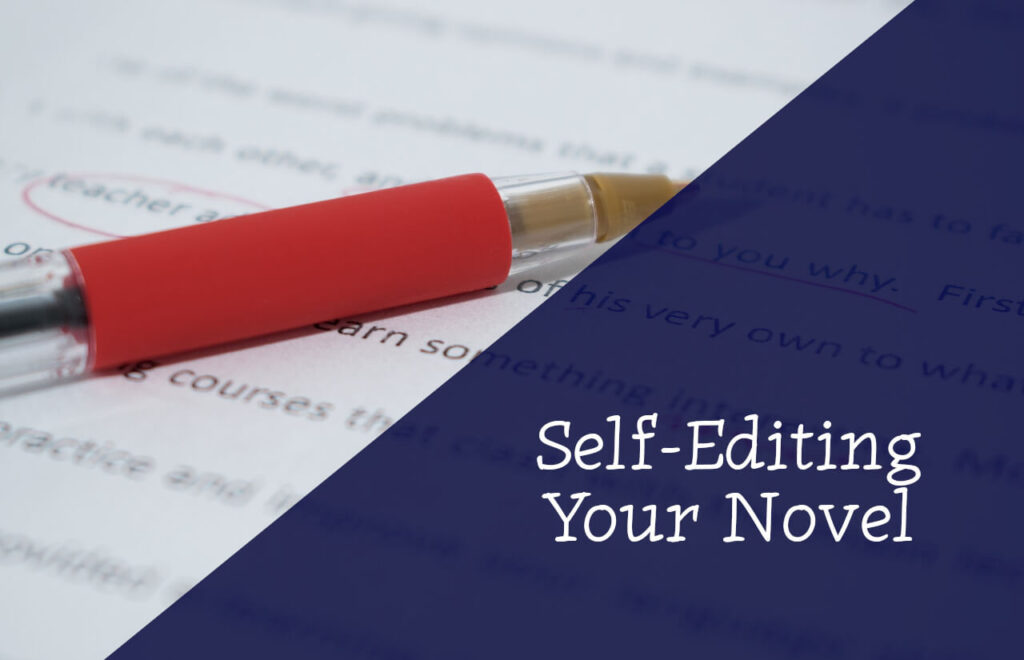Doing a self-edit is important because stepping back from your role as an author and looking at your manuscript objectively helps to hone your writing craft and improve your book. It also cuts down on the cost of a professional editor.

I find the most effective way to self-edit is to do two passes on your manuscript.
The first pass is to identify and resolve any big picture issues, the second is to address sentence level problems.
Before you start self-editing, make sure you’ve let your manuscript sit untouched for at least a month. Opinions differ about how long your manuscript should sit, but the important thing is to put it away long enough that it’s not constantly on your mind. The goal here is to create distance between yourself and your manuscript so you can look over it with fresh eyes.
First Pass
The first pass is like a substantive self-edit. Read through your manuscript quickly (meaning don’t stop to fuss over wording or rearrange sentences). At this point, you want to focus on the big picture problems:
- Beginning – Does your story start in the right place? If you find there is not much happening at the beginning of the story or there is a lot of backstory throughout the manuscript, this may be an indication you haven’t started in the right place.
- Point of view – Is the point of view appropriate for the story? Is it consistent throughout?
- Plot – Are there any holes in the main plot? How about the sub-plots? Do the sub-plots add to the story or distract from the main plot? Can you identify the inciting incident, turning points, crisis, climax, and resolution?
- Characters – Are your characters fleshed out enough? Do they have believable motivations to suit their actions? Are their goals and desires clear? If you cut the character from the story would it change drastically?
- Scenes – Does every scene serve a purpose? Does it help to move the plot forward or develop a character in a crucial way?
- Ending – Does your story end in the right place? Are all the plot lines tied up? Is the ending satisfying?
When we write, we have to make a lot of decisions. Often we end up forgetting where we landed with certain aspects of our story. This quick read through reminds us what decisions we made. Thinking critically about each of the big picture aspects above shows us how each element of the story functions and lets us hone in on the areas that need improvement.
Second Pass
The second pass in a self-edit is like a combination stylistic edit and copy edit. This time you can go through your manuscript at a slower pace to focus on the sentence level issues and tidy up any grammatical or spelling errors along the way.
Sentence level issues you should look out for are:
- Repetitive sentence starts and word choices
- Run-on sentences
- Redundancies – for example, she smiled happily. In this example, happily is redundant. She smiled is enough to indicate to the reader that she is happy.
- Wordiness – this ties in with the previous point about redundancies, but more specifically I’m referring to instances where a writer has used many words where one will do. For example, saying in close proximity to instead of near, or owing to the fact that instead of because.
- Filler words – Cut down on filler words. These are words that take up space but don’t add to the story. Everyone has different filler words but some common ones to watch out for are: a bit, a little, almost, just, kind of, only, quite, really, seem, slightly, so, sort of, somewhat, that, very
That’s it for self-editing. Once you’ve completed your two passes, the next step is to hand your story over to some beta readers.
Any questions about self-editing? Let me know in the comments.

1 thought on “How to Self-Edit Your Novel in Two Passes”